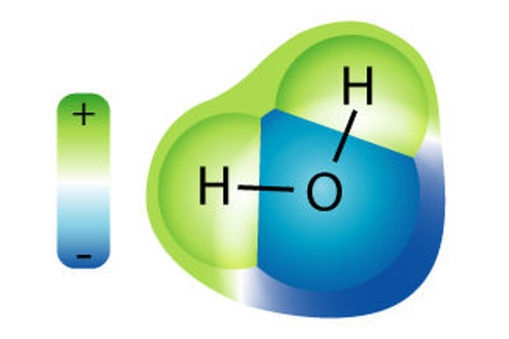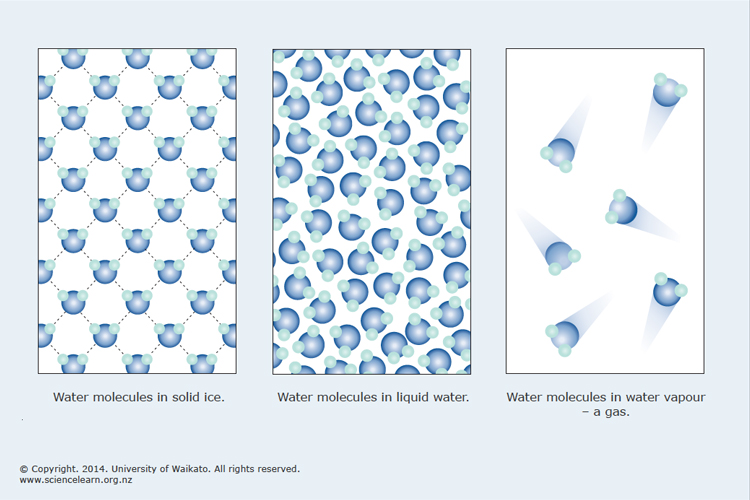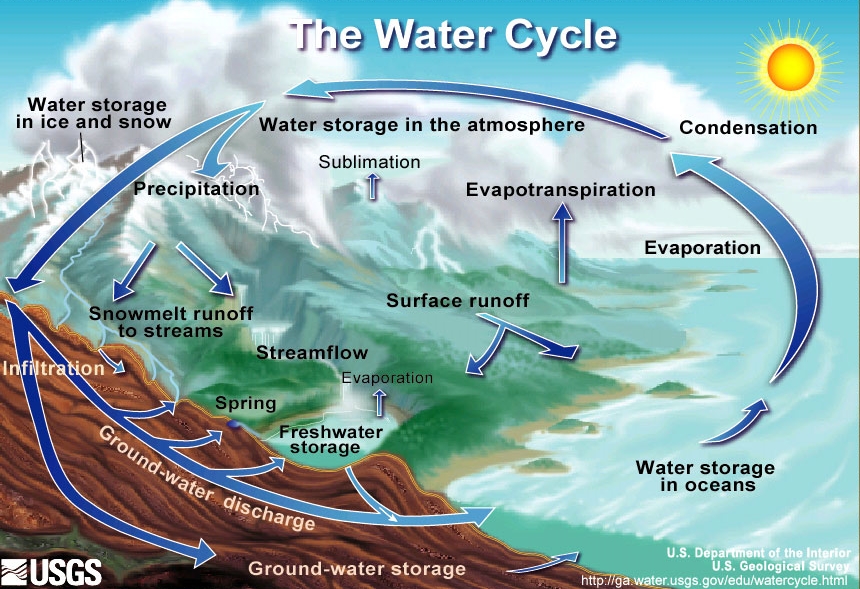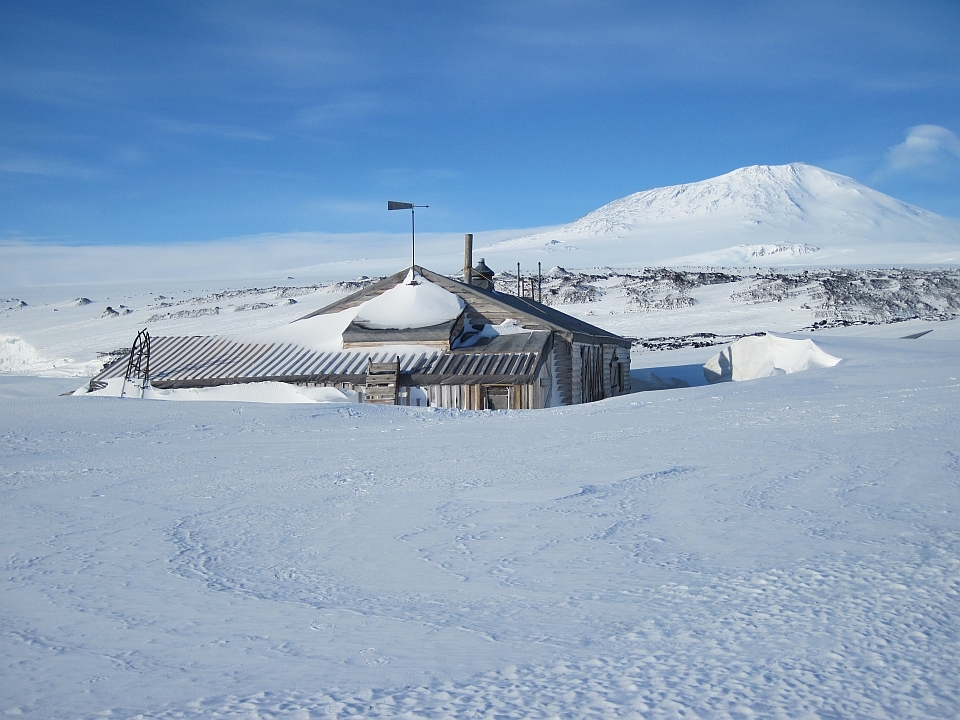You can contact LEARNZ, part of CORE Education, at:
Postal Address:
PO Box 13 678,
Christchurch 8141,
New Zealand
Water can be a solid, liquid or gas here on Earth. When water changes state it can move between the air, ground, plants, lakes, rivers and oceans.
A molecule is a group of two or more atoms that bond or ‘stick’ together. Water is a molecule. It is made up of two hydrogen (H) atoms and one oxygen (O) atom that are bonded together. The H and O are symbols for the atoms that make up water. This is why people often call water H2O.
Water can change from a liquid to a solid or a gas and back to a liquid, over and over again. Not all substances can do this.
If you change the state of water you don't change the amount of water or the molecules that make up this water. A water molecule is always H2O whether it is liquid water, ice or water vapour, the only thing that changes is the movement of the water molecules:
Water is liquid in rivers, groundwater, lakes, oceans and rain.
As a gas, water vapour comes from the surface of water bodies like oceans or lakes, and from the surface of plants and the land when this water is heated by the Sun. This process is called evaporation; when water changes from a liquid to a gas.
Snow and ice are the solid form of water. Some snow and ice melts and turns into liquid water. In Antarctica, ice can stay frozen for thousands of years.
Only a very small amount of the total amount of water (about 0.3%) is drinkable water.
If you leave some water on a saucer by a window, it will over time evaporate. This happens only if there is enough heat energy for the water molecules to move and ‘break’ out of their liquid structure and turn into a gas.
Most evaporation is from the oceans but this water will in time cool and rain back into the ocean. Some rain falls on the land and might spend some time there as ice, snow, groundwater or in streams, or it may be stored in lakes before it returns back to sea.
This journey of water is called the water cycle. It describes the change and movement of water. Understanding things that can affect the water cycle helps us to understand how climate change will affect people.

,Water is a molecule made up of one oxygen atom bonded to two hydrogen atoms. It is known as H2O. Image: University of Waikato www.sciencelearn.org.nz

,Water is able to change between solid ice, liquid water and the gas water vapour. These changes in state happen as molecules gain heat energy and more movement. What do you notice about the structure of molecules in ice compared with water? Image: University of Waikato www.sciencelearn.org.nz

,The movement of water on, above and below the Earth can be represented in a water cycle diagram. How do you think the water cycle in Antarctica would be different from the water cycle where you live? Image: USGS

Antarctica is the driest place on Earth, why do you think it is so dry? Image: LEARNZ.
How do you think climate change could affect the water cycle?